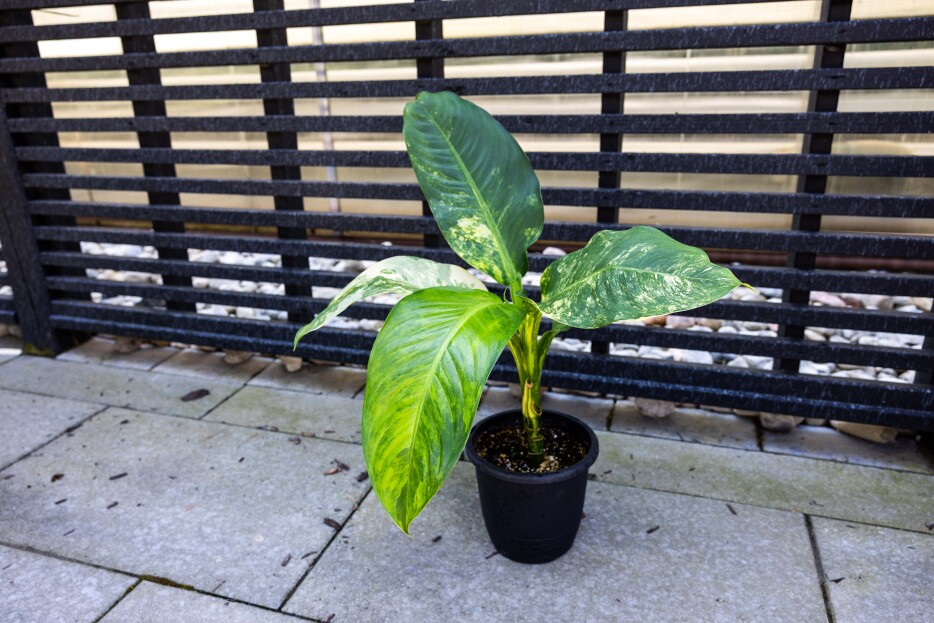
A striking giant with bold foliage and tropical flair
If you're looking for a plant that makes a statement without demanding too much in return, Dieffenbachia ‘Big Ben’ is the one. Known for its extra-large leaves, sturdy upright growth, and stunning variegation in shades of green, cream, and white, this tropical houseplant brings lush drama to any indoor space.
‘Big Ben’ is a cultivar of the classic Dieffenbachia, also called Dumb Cane, and is beloved for its easy care and fast growth. It’s ideal for those who want a big, bold look—without a big fuss.
Dieffenbachia ‘Big Ben’ prefers bright, indirect light. Placing it a few feet away from a south or west facing window is ideal. It will tolerate medium light, but if the light is too low, growth may slow and the variegation may fade. Be sure to avoid direct sunlight, as it can scorch the large leaves and leave behind unsightly brown patches.
Keep the soil evenly moist but not soggy. Water the plant when the top 1 to 2 inches of soil feel dry. During its active growing season in spring and summer, this may be every 7–10 days. In cooler months, reduce watering slightly to avoid waterlogged soil.
Always use a pot with drainage holes, and be careful not to let the plant sit in standing water, as this can quickly lead to root rot.
As a tropical plant, Dieffenbachia ‘Big Ben’ appreciates higher humidity, although it adapts well to average indoor levels. To increase humidity, you can mist the plant occasionally, place a humidifier nearby, or group it with other houseplants to create a more humid microclimate.
This plant thrives in temperatures between 65–80°F (18–27°C). Be sure to avoid cold drafts and do not place it near air conditioning vents or heating units, as sudden temperature changes can stress the plant.
Use a well-draining potting mix that is rich in organic matter. An ideal mix might include standard indoor potting soil combined with perlite or pumice for drainage and a small amount of orchid bark or coco coir to improve aeration.
Repot the plant every 1 to 2 years or when it becomes root-bound. When repotting, select a container that is only 1 to 2 inches larger in diameter than the current pot to prevent excess moisture retention.
Feed Dieffenbachia ‘Big Ben’ every 4–6 weeks during the spring and summer months using a balanced, water-soluble fertilizer diluted to half strength. Avoid fertilizing during the fall and winter when the plant’s growth naturally slows down.
To keep the plant looking neat and healthy, prune away any yellowing or damaged leaves. If the plant becomes too tall or leggy, you can trim back the stems using clean, sharp scissors or pruning shears, cutting just above a leaf node to encourage new growth.
It’s also a good idea to wipe the large leaves occasionally with a damp cloth to remove dust and allow the foliage to shine.
Dieffenbachia ‘Big Ben’ is easy to propagate through stem cuttings. Start by cutting a healthy section of cane that includes at least one node. Let the cutting callous over for a few hours to prevent rot, then place it in water or moist soil. Roots typically develop within 2–4 weeks. Once the roots are established, you can pot the new plant in soil and continue with normal care.
Dieffenbachia ‘Big Ben’, like other Dumb Canes, contains calcium oxalate crystals, which can be toxic if ingested. These crystals may cause irritation, swelling, or more severe symptoms in pets or humans. For this reason, it's important to keep the plant out of reach of cats, dogs, and young children.